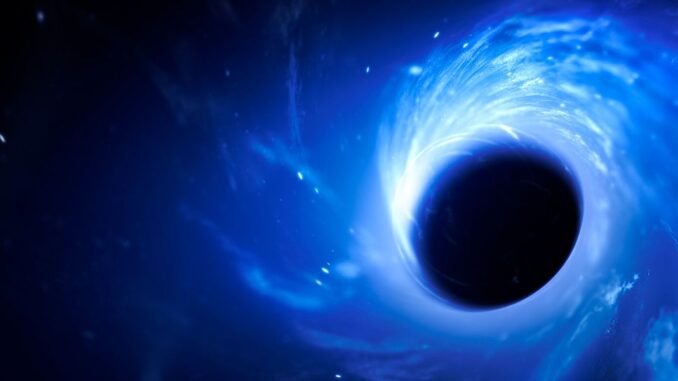
Professor Kalliopi Dasyra of the National and Kapodistrian University of Athens, Greece, led the European studies crew which blanketed Dr Thomas Bisbas from the University of Cologne. Scientists modelled numerous emission traces withinside the Atacama Large Millimetre Array (ALMA) and Very Large Telescope (VLT) observatory, to degree the fueloline stress in each jet-impacted clouds and ambient clouds.
With the unheard of measurements amassed from this equipment, researchers located that the jets substantially alternate the inner and outside stress of molecular clouds of their path. This manner that, relying on which of the 2 pressures modifications the maximum, the compression of clouds, the triggering of supermegacelebrity formation, the dissipation of clouds, and the delaying of supermegacelebrity formation are feasible withinside the identical Galaxy.
“Our effects display that supermassive black holes, despite the fact that they’re placed on the centres of galaxies, should have an effect on supermegacelebrity formation in a Galaxy-extensive manner,” defined Professor Dasyra. “Studying the effect of stress modifications on the steadiness of clouds turned into key to the achievement of this project. Once some stars definitely shape in a wind, it’s also very tough to discover their sign on pinnacle of the sign of all different stars withinside the Galaxy web website hosting the wind.”
This observe turned into lately posted in Nature Astronomy.
Star formation because of fueloline condensation
For decades, scientists have believed that supermassive black holes lie on the centres of maximum galaxies in our Universe. When debris that have been infalling onto those black holes are trapped with the aid of using magnetic fields, they may be ejected outwards and tour some distance inner galaxies withinside the shape of substantial and effective jets of plasma. These jets are regularly perpendicular to galactic disks. However, in IC 5063 – a Galaxy 156 million mild years away – the jets are definitely propagating in the disk, interacting with bloodless and dense molecular fueloline clouds. It is theorised from this interplay that the compression of jet-impacted clouds is feasible, main to gravitational instabilities and finally supermegacelebrity formation because of the fueloline condensation.
During the experiment, the crew utilised the emission of carbon monoxide (CO) and formyl cation (HCO+) supplied with the aid of using ALMA, and the emission of ionised sulphur and ionised nitrogen supplied with the aid of using VLT. They then used superior and revolutionary astrochemical algorithms to pinpoint the environmental situations withinside the outflow and withinside the surrounding medium.
These environmental situations incorporate facts approximately the electricity of the some distance-ultraviolet radiation of stars, the charge at which relativistic charged debris ionise the fueloline, and the mechanical strength deposited at the fueloline with the aid of using the jets. Narrowing down those situations discovered the densities and fueloline temperatures descriptive of various components of this Galaxy, which have been then utilised to offer pressures.
“We have done many lots of astrochemical simulations to cowl a extensive variety of opportunities which could exist in IC 5063,” stated co-writer Dr Thomas Bisbas, DFG Fellow of the University of Cologne and previous postdoctoral researcher on the National Observatory of Athens.
Identifying as many bodily constraints as feasible
A tough a part of the paintings turned into to meticulously perceive as many bodily constraints as feasible to the tested variety that every parameter should have. “This way, we should get the superior aggregate of bodily parameters of clouds at specific places of the Galaxy,” stated Mr Georgios Filippos Paraschos, co-writer, PhD pupil on the Max Planck Institute for Radio Astronomy in Bonn, and previous Master’s pupil on the National and Kapodistrian University of Athens.
Pressures have been now no longer simply measured for some places in IC 5063. Instead, maps of this and different portions withinside the centre of this Galaxy have been created. These maps allowed the authors to visualize how the fueloline homes transition from one place to some other due to the jet passage. The crew is presently searching ahead to the subsequent huge step of this project, that’s utilizing the James Webb Space Telescope for similarly investigations of the stress withinside the outer cloud layers, as probed with the aid of using the nice and cozy H2.
“We are surely enthusiastic about getting the JWST data,” concluded Professor Dasyra. “As they may permit us to observe the jet-cloud interplay at an brilliant resolution.”

Leave a Reply